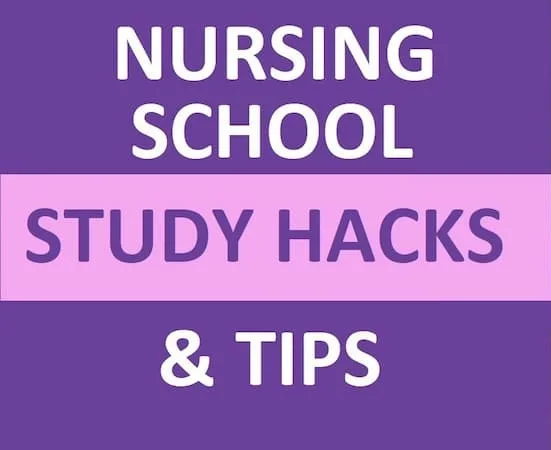1. A nurse is teaching a client about advance directives. Which of the following client statements indicates an understanding of the teaching?
A. I need to choose a family member as my healthcare surrogate.
B. I cannot change my decisions once I sign my advance directives.
C. My healthcare surrogate will make healthcare decisions for me if I am unable to.
D. I need to have an attorney present to complete my advance directives.
Answer: C
Explanation
C is correct, as mentioned earlier. A healthcare surrogate can decide on your behalf if you cannot do so based on your previously expressed wishes or best interests.
2. A nurse manager calls a staff nurse to come in and work due to staffing shortages in several units. The staff nurse is at home and has influenza. Which of the following actions by the staff nurse demonstrates the ethical principle of fidelity
A. Report to work as requested
B. Agree to work only until the supervisor can find a replacement
C. State that staff nurses do not have an obligation to work on days off
D. Decline because nurses should not work when ill
Answer: D
Explanation
Working when ill, especially with a contagious illness like influenza, can put patients, colleagues, and the nurse’s own health at risk. Fidelity to ethical principles in nursing involves recognizing when it’s not ethically responsible to work due to illness, as it could potentially harm others. The nurse should prioritize the health and safety of both themselves and the patients they care for.
Are you looking to prepare for the TEAS exam? Test your knowledge with our Free ATI TEAS Practice Test to ensure you’re ready for this essential assessment in your nursing journey
3. A nurse is teaching a newly licensed nurse about do-not-resuscitate (DNR) orders, which of the following information should the nurse include in the teaching
A. The provider decides whether a client should have a DNR order
B. The provider will discontinue the client’s medications after writing a DNR order
C. The client will need to sign an informed consent form for CPR if they do not have a
D. The provider should periodically evaluate the DNR order
Answer: D
Explanation
The healthcare provider should periodically review and evaluate DNR orders to ensure they align with the client’s current medical condition and preferences. Clients may change their preferences or medical status over time, so it’s essential to revisit DNR orders as needed.
4. A charge nurse reinforces teaching with a newly licensed nurse about do-not-resuscitate (DNR) prescriptions. Which of the following information should the charge nurse include?
A. Nurse should attempt to resuscitate clients who do not have a DNR prescription
B. Providers will discontinue all medications after a DNR prescription is signed
C. Clients cannot revoke a DNR prescription once it is signed
D. Providers should not place a copy of a DNR prescription in a client’s
medical record
Answer: A
Explanation
The charge nurse should instruct the newly licensed nurse to verify whether a client has a DNR prescription in advance and to attempt to resuscitate any client who does not have a DNR prescription.
5. A nurse is assisting with an educational session about ethical issues. Which of the following client situations should the nurse include as an example of an ethical issue?
A. A guardian is trying to persuade an adolescent to become an organ donor for a younger sibling who has kidney failure
B. A client who has amyotrophic lateral sclerosis names a former partner as their healthcare surrogate
C. A client who experiences a partial loss of vision requests assistance with living at home alone
D. An assistive personnel (AP) is assigned to prevent a client who is experiencing opioid withdrawal from leaving the room
Answer: A
Explanation
The nurse should include this as an example of an ethical issue because this situation involves a conflict between what is in the best interest of two different minors. It also involves the potential coercion of a minor
6. A nurse is reviewing the prescriptions of four clients on a medical-surgical unit. Which of the following prescriptions should the nurse clarify with the charge nurse?
A. Encourage weight-bearing as tolerated for a client who is postoperative following cemented total knee arthroplasty
B. Administer digoxin by mouth to a client who has a history of atrial fibrillation.
C. Administer 2 units of packed RBCs over 3 hr to an older adult client with chronic anemia.
D. Administer vitamin B12 IM to a client who is postoperative following bariatric surgery
Answer: C
Explanation
The nurse should clarify this prescription with the charge nurse because older adult clients are at increased risk for fluid volume overload when receiving fluid or blood replacement. The best practice for blood replacement for an older adult client is administering each unit over 2 to 4 hours with a one-hour rest interval between units
7. A nurse is monitoring an assistive personnel (AP) who is obtaining a clean catch urine specimen from a female client. Which of the following actions by the AP indicates an understanding of the procedure?
A. Cleans the client’s perineal area from back to front
B. Uses the same towelette to clean the client’s perineum two times
C. Wears clean gloves to collect the urine specimen
D. Collects the urine specimen at the start of the void
Answer: C
Explanation
The nurse should identify that the AP should wear clean gloves to collect a clean catch urine specimen from a client. The AP should not touch the inside of the specimen container because this could cause contamination of the urine specimen
8. The nurse is planning care for a client with a fluid volume deficit secondary to dehydration. For each healthcare provider prescription, indicate if the prescription is anticipated or contraindicated
A. Administer 3% sodium chloride 500 mL intravenous bolus now.
B. Administer desmopressin 3 mcg via intravenous injection twice daily.
C. Administer 0.9% sodium chloride 150 mL/hour intravenously.
D. Implement fall precautions.
E. Document hourly intake and output (I&O) and daily weight.
Answer
A. Administer 3% sodium chloride 500 mL intravenous bolus now.
Anticipated: This prescription is anticipated for a client with severe dehydration to rapidly restore intravascular volume. A 3% sodium chloride solution is a hypertonic solution that helps in addressing fluid volume deficit.
B. Administer desmopressin 3 mcg via intravenous injection twice daily.
Contraindicated: Desmopressin is a medication that primarily affects water retention by the kidneys and is used to manage conditions like diabetes insipidus. However, it’s not typically used in the initial treatment of fluid volume deficit. The priority is to replace lost fluids with isotonic solutions.
C. Administer 0.9% sodium chloride 150 mL/hour intravenously.
Anticipated: This prescription is anticipated for a client with a fluid volume deficit. 0.9% sodium chloride (normal saline) is an isotonic solution commonly used to restore and maintain fluid balance.
D. Implement fall precautions
Anticipated: Fall precautions are often implemented when a client receives intravenous fluids, especially if they have been dehydrated, as they may feel weak or unsteady. This is a safety measure to prevent falls.
E. Document hourly intake and output (I&O) and daily weight.
Anticipated: Documenting I&O and daily weight is essential when managing a client with a fluid volume deficit. It helps monitor the effectiveness of fluid replacement therapy and the client’s response to treatment.
9. A nurse will delegate client care tasks to an assistive personnel (AP). Which of the following tasks should the nurse plan to delegate to the AP?
A. Perform gastrostomy feedings through a client’s established gastrostomy tube
B. Determine if the PRN pain medication administered 30 minutes ago has helped
C. Provide instructions about client care to a family member over the telephone
D. Teach a client how to measure their own blood pressure
Answer: B
Explanation
B. Correct. This task involves assessing the client’s response to pain medication, which is a basic observation and does not require the specialized skills of a licensed nurse. An AP can check in with the client and report their observations regarding pain relief or lack thereof.
A. Incorrect. Performing gastrostomy feedings is a complex task that requires specialized training and assessment skills. The nurse should not delegate this task to an AP without the appropriate education and competency validation.
C. Incorrect. Providing instructions about client care to a family member over the telephone is a task that requires clinical judgment and communication skills. The nurse should not delegate this task to an AP who might not have the knowledge or authority to answer questions or address concerns.
D. Incorrect. Teaching clients about healthcare procedures, especially those related to their own health, often requires a nurse’s expertise to ensure accuracy and patient understanding. The nurse should not delegate this task to an AP who cannot explain the procedure, demonstrate the technique, or assess the client’s learning.
Looking for comprehensive resources for TEAS, HESI, and nursing prep exams? Visit Nursingprepexams, your one-stop destination for exam preparation materials and practice tests.
10. The nurse is caring for four clients. Which client should be closely monitored for manifestations of hypernatremia?
A. Middle adult client with diabetes insipidus
B. Older adult client with syndrome of inappropriate antidiuretic hormone
C. Young adult with acute kidney injury
D. Older adult client with heart failure
Answer: A
Explanation
Hypernatremia is characterized by an elevated sodium level in the blood. Diabetes insipidus can lead to hypernatremia due to excessive water loss, which can occur if the body cannot properly regulate water balance. In diabetes insipidus, there is an inadequate production or response to the antidiuretic hormone (ADH), leading to excessive urination and fluid loss. This condition can result in dehydration and elevated sodium levels.
The other clients may be at risk for different electrolyte imbalances:
The older adult client with the syndrome of inappropriate antidiuretic hormone (SIADH) is more likely to develop hyponatremia due to water retention and dilution of sodium in the blood.
The young adult with acute kidney injury may be at risk for various electrolyte imbalances depending on the extent and type of kidney injury, but not necessarily hypernatremia.
The older adult client with heart failure may be at risk for fluid overload and hyponatremia due to the retention of fluids in heart failure.
11. A charge nurse is conducting an in-service with staff members about infection control precautions. The nurse should instruct the staff that which of the following clients requires droplet precautions?
A. A client who has shigella
B. A client who has measles
C. A client who has toxic shock syndrome
D. A client who has pertussis
Answer: D
Explanation
Pertussis: A client who has pertussis requires droplet precautions.
A. A client who has shigella and is incontinent requires contact precautions.
B. A client who has measles requires airborne precautions.
C. A client who has toxic shock syndrome requires standard precautions.
12. A charge nurse is observing a newly licensed nurse care for a client who has a prescription for applying an aquathermia pad to the right lower leg. Which of the following actions should indicate to the charge nurse that the nurse understands how to use the device? (Select all that apply.)
A. Asks the client to report if the aquathermia pad gets too warm
B. Checks the client’s leg 30 min after applying the aquathermia pad
C. Shows the client how to adjust the temperature
D. Ensures that the client’s call light is within reach
E. Decreases the temperature by 2.8° C (5° F) if the client’s skin becomes reddened
Answer: A and D
Explanation
A is correct. The nurse should instruct the client to report if the aquathermia pad gets too warm because it can cause the client injury.
B is incorrect. The nurse should check the client’s leg 15 to 20 min after applying the aquathermia pad to ensure there is no evidence of complications.
C is incorrect. The nurse should not show the client how to adjust the temperature. Temperature adjustments can result in pain and impaired circulation.
D is correct. The nurse should ensure that the client’s call light is within reach as part of basic safety instructions.
E is incorrect. The nurse should monitor the client’s skin for increased redness and discontinue the aquathermia pad if this is noted. The nurse should also report the findings to the provider.
13. A nurse preceptor is evaluating the performance of a newly licensed nurse. Which of the following actions by the newly licensed nurse requires intervention by the preceptor?
A. Documents client tasks upon completion
B. Completes a client assessment while infusing an IV antibiotic over 30 min
C. Returns to the nurses’ station after completing several tasks in the same location
D. Starts a task, then determines what supplies are needed
Answer: D
Explanation
D is correct because this action demonstrates a lack of proper planning and organization. Nurses should always gather the necessary supplies and equipment to ensure efficiency and patient safety before starting a task. Starting a task without knowing what supplies are needed can lead to delays, interruptions, or even potential harm to the patient.
14. A nurse manager reviewing the stages of conflict resolution with the nursing staff. The nurse manager should instruct the staff to expect the stages of the conflict to occur in what order.
Latent
Manifest
Aftermath
perceived
felt
Answer
Latent, perceived, felt, manifest, aftermath
Explanation
The first stage of the conflict process is latent conflict, which involves awareness of potential situations that can create conflict. Stage two is perceived conflict, where those who are affected discuss the situation in an impersonal manner. Stage three is felt conflict, which occurs when those who are affected become personally involved. Stage four is manifest conflict and is signaled by those who are involved in taking action. In stage five, or conflict aftermath, those who are involved recognize the positive and negative outcomes of how the situation was managed.
15. A nurse in a mental health clinic is assessing a client who has a history of seeking counseling for relationship problems. The client shows the nurse multiple superficial self-inflicted lacerations on the forearms. These behaviors are characteristics of which personality disorder?
A) Borderline
B) Antisocial
C) Histrionic
D) Paranoid
Answer: A
Explanation
The nurse should recognize that clients who have borderline personality disorder are emotionally unstable, have troubled interpersonal relationships, and often engage in harmful behaviors such as cutting, substance use, and suicidal thoughts. People with BPD may struggle with impulsivity, mood swings, and a fear of abandonment, which can contribute to difficulties in maintaining healthy relationships.
Explore essential TEAS exam subjects to help you prepare effectively. Choose from the following sections to access practice materials and resources for each subject:




